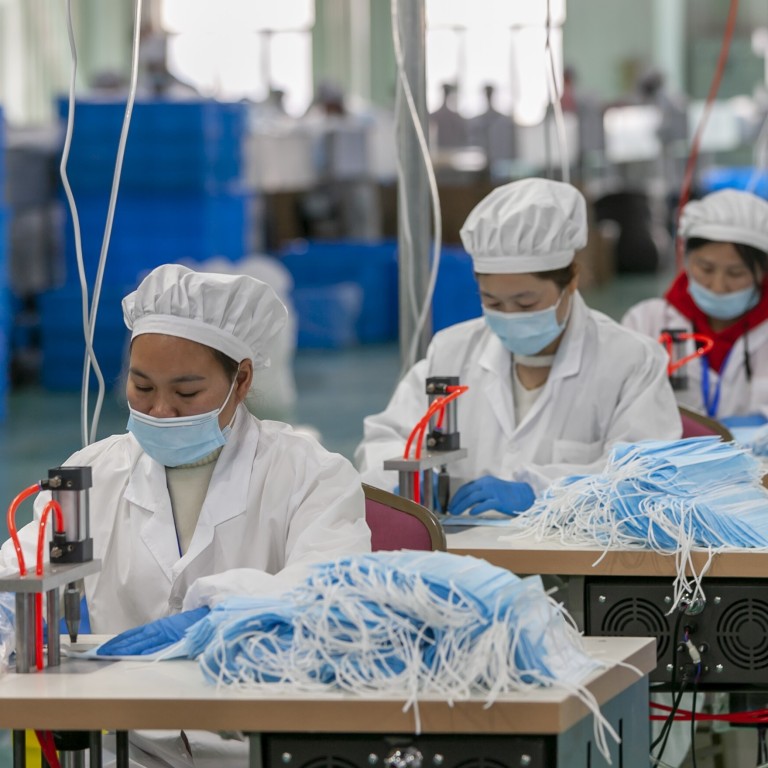
Face masks among Chinese exports given four-month US trade war tariff reprieve
- Dozens of US imports from China granted short extension to previous tariff exemptions, until the end of 2020, after the American election
- Renewal of previous one-year product exclusion covers diverse range of goods, including respirators, binoculars and musical instruments
Disposable face masks, respirators, Bluetooth tracking devices and musical instruments are among the Chinese exports granted a new short-term exemption to trade war tariffs by the United States, its trade department announced on Tuesday.
The products on List 1 of the Section 301 tariff action against China had been exempted on September 1, 2019, for one year. But the reprieve has been extended just four months, until the end of 2020. The Office of the US Trade Representative (USTR) did not explain why the extension period was shortened, in a note published on the Federal Register, the official journal of the federal government that contains government agency rules, proposed rules and public notices.
Other items on the exclusion list include LCD display units, binoculars, postage stamps and earth-drilling machinery. This is one of eight lists of exempted products issued under the USTR’s product-exclusion process, launched last year.
Illustrating how disparate and miscellaneous the dozens of listed items are, the exemptions also include “tufts of swine hair bristles, oriented with the soft feather tipped ends of the hairs facing up and the hard, root ends of the hairs facing down, with the root ends of the hairs glued together to form a round bottom not more than 7mm in diameter” and “brushes of natural goat hair bristles, which are in lengths of at least 30mm but not more than 33mm”.
Trade, initially the primary area on which US President Donald Trump attacked China, has been viewed in recent weeks as one of the few areas of constructive dialogue between the world’s two largest economies, with the superpower relationship descending into what is widely billed as a “new cold war”.
And while China is still well behind in its targeted levels of purchases of American goods, as laid out in the phase one deal, it has been increasing its imports significantly in recent months.
On Tuesday, the US Department of Agriculture said 596,000 metric tonnes of corn had been bought by Chinese buyers, the latest in what has become a daily practice of large agricultural purchases.
China is well behind its promised purchases … Phase one should collapse under its weight
Last week marked six weeks in a row where US soybean sales surpassed 1 million tonnes, with 32 per cent of those bound for China. Nonetheless, China’s purchases of all covered products under phase one were only at 48 per cent of their year-to-date targets as of the end of July, according to the Peterson Institute for International Economics.
While many analysts expect the deal to limp on at least until November’s US elections, some critics have suggested that it is mere window-dressing on collapsing superpower ties.
“The current centrepiece of American trade relations with China is the ‘phase one’ deal,” wrote Derek Scissors, a resident scholar at the American Enterprise Institute, in a blog post encouraging the US to prioritise a trade deal with Taiwan. “China is well behind its promised purchases, the main intellectual property action is adding rules when enforcement has long been the problem, and the administration no longer even wants the financial market access it negotiated. Phase one should collapse under its weight.”

